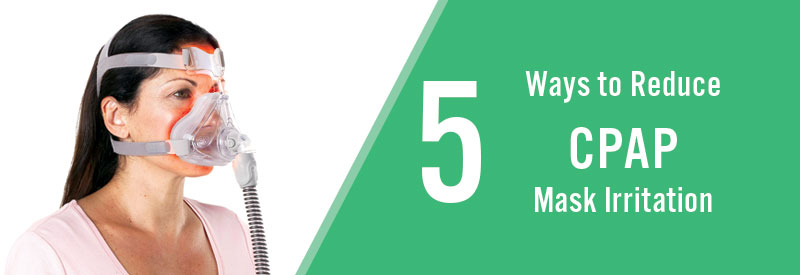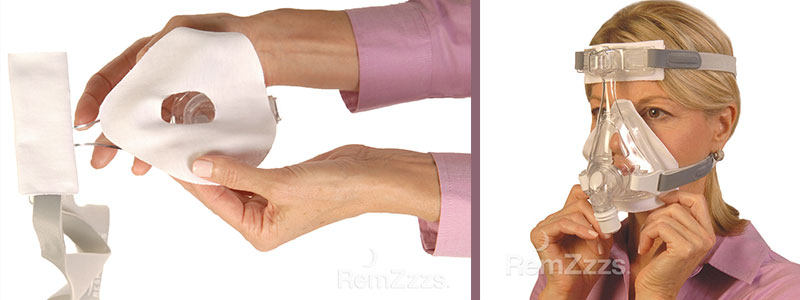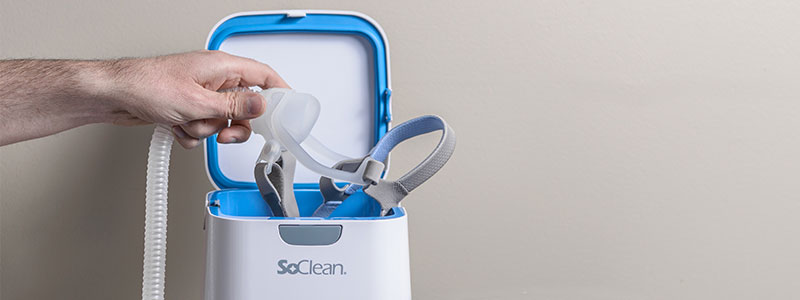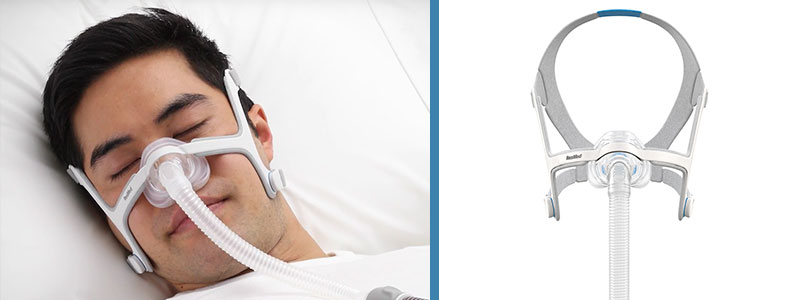
Blemishes, sores, redness, rashes, and other unsightly and sometimes painful skin problems are common side effects of wearing a CPAP mask.
Luckily, there are a number of ways to alleviate and eliminate these skin irritations so that you can focus on getting a full night of sleep and stop worrying about the red marks on your cheeks.
Most of these issues happen to people who are new to CPAP treatment – sometimes it can take a little while for your skin to get used to the mask. If you have particularly delicate or vulnerable skin, you may be more susceptible.
While most leading manufacturers of CPAP masks (ResMed, Phillips Respironics, and Fisher & Paykel) make comfort a priority by using hypoallergenic materials, regular maintenance is still critical. Here are some ways you can reduce CPAP mask irritation.
1. Be sure your mask is the right size.

A mask that is either too big or too small can cause skin irritations.
If your mask is too tight, it could be pressing into your face and causing indentation marks. If your mask is too loose, your mask could be leaking excess air – when combined with the mask shifting around and rubbing against your skin, this can result in some pretty painful sores. Make sure that when you are getting fitted for a mask you know exactly what size you need. You might also want to try adjusting the straps on the CPAP mask, which could help out tremendously to customize the fit.
It can be difficult to tell what size mask you need if you’re trying it for the first time. Let Easy Breathe help you figure it out. Call 866-564-2252. If you order a mask from Easy Breathe and it turns out to be the wrong size, fear not. Easy Breathe offers 100% store credit for any opened or unopened mask!
2. Don’t go to sleep with an oily face.

Over the course of a day, your face can become pretty oily.
Be sure to wash your face with soap and water before putting on your mask. Having clean skin will prevent your cushion from sliding around. If your cushion moves too much when you sleep, you can get red chaffing marks on your cheeks.
It is recommended not to wear lotion on your face, which can cause chaffing as well. If you need to moisturize, try to stick with non-greasy formulas.
3. Use full-face or nasal mask liners.
While allergic reactions to silicone are actually quite rare, some people can find any contact with the material aggravating.
One of the best ways to alleviate mask irritation is to use a barrier of some sort between the mask and your skin. Sometimes it can be really hard to find a perfectly fitting mask, but people who use these barriers – for either a full-face mask or nasal mask – report that their mask fits better than ever.
There are full-face and nasal liners available for masks that are made by ResMed, Phillips Respironics, and Fisher & Paykel.
Not sure which mask liner will fit your mask? Easy Breathe customer service can help you figure it out. Call 866-564-2252.
4. Be sure to clean your mask regularly.
Cleaning is important because it will ensure that your mask is free from bacteria and any other germs that could potentially cause irritation or infection. Cleaning your CPAP mask is actually quite easy, but you want to be careful with what kind of cleaning solutions you use.
Typically, a solution of warm water and soap will do the trick. Do not leave your mask and head gear in direct sunlight when drying.
ResMed recommends avoiding scented soaps. You should never use alcohol, vinegar, bleach, or over the counter antibacterial agents, because they can dry out the mask. Like your skin, your mask is delicate too. ResMed also recommends cleaning your mask daily and your headgear on a weekly basis. Our affordable CPAP cleansers are a convenient and simple solution.
The SoClean 2 and the VirtuCLEAN sanitize your CPAP equipment for you! With these ozone CPAP cleaners, you can be confident that you are getting rid of 99.9% of all bacteria, viruses, and other agents that may cause skin infections.
Whatever means you decide to use, remember that maintenance and cleaning is the best way to reduce skin irritations.
5. You might need a new mask.
If your mask fits perfectly and you just have no idea what is causing the redness and pain on your face, there is a good chance that you need a new mask. Just like you need to get a new toothbrush every couple of months, getting a new CPAP mask is critical to reducing any skin irritations you might be having.
One of the biggest signs that you need to get a new mask is if you see any cracking, dryness or stiffness on the mask or on the mask cushions. Any discoloration (yellowing) in your mask cushion also signals that it needs to be replaced. If you notice excessive leaking that wasn’t present when you first got the mask, it might be time to get a new one.
All doctors and suppliers of CPAP materials recommend getting a new mask every three to six months, but if you start to see signs of wear and tear, it is important to get a new mask immediately.
We recommend the Resmed Airfit N20 Mask (shown above): a sleek, minimal interface that is lightweight and comfortable.
Try any mask from Easy Breathe Risk Free! Purchase a new mask you think you might like, and try it for up to 30 days. If it doesn’t feel right no matter what you do, you can return the mask for a full refund. Ask a customer service representative about this Mask Guarantee offer. Call 866-564-2252 or email [email protected] for a quick and thorough response!
Some of these CPAP supplies could be yours for $0! Allow us to check with your insurance provider for you to find out what is covered (for free!). Click below to get started:













